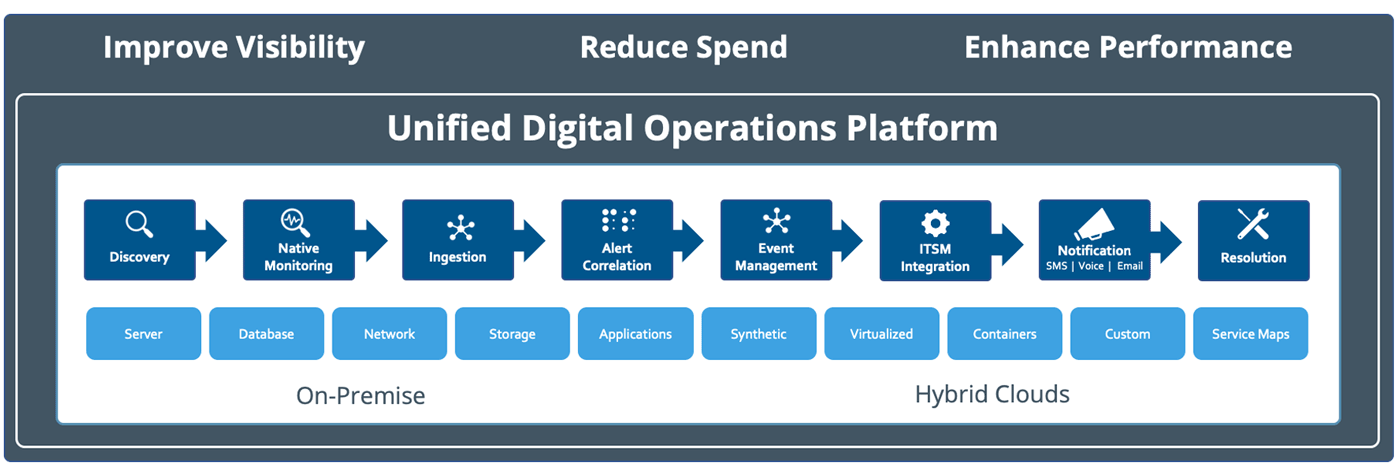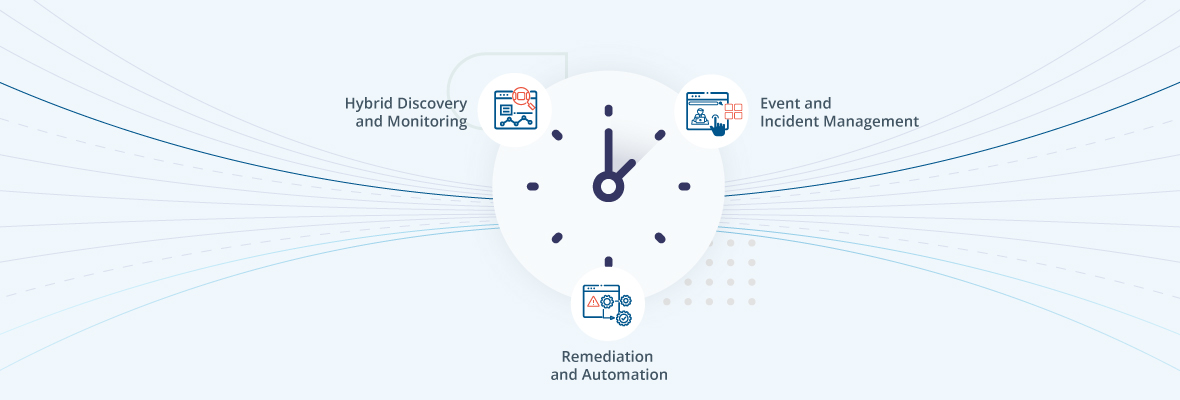The 2020 State of the Cloud Report finds that 60% of enterprises will increase their cloud infrastructure usage due to Covid-19. Hybrid infrastructure adoption creates new management challenges for IT operations teams which are further exacerbated by shrinking technology budgets and staff skill shortages. Gartner predicts that 40% of IT operations teams will deploy AI-augmented automation by 2023 to keep up with customer expectations and changing business models.
While machine learning investments can boost productivity, IT leaders should examine their organizational processes, staff readiness, and tools stack to realize value for real-world operations. Here are some questions that technology executives and managers should consider while transforming their IT operations to meet the challenges of enterprise digital transformation:
| Hybrid Discovery and Monitoring |
|
| Event and Incident Management |
|
| Remediation and Automation |
|
How OpsRamp enables discovery to resolution
OpsRamp can automate critical stages of the enterprise operations lifecycle by discovering, monitoring and optimizing the infrastructure landscape with a single source of truth. The platform uses a three-pronged approach to deliver the right situational awareness for IT operations management:
 Drive business agility and faster innovation with automated IT operations
Drive business agility and faster innovation with automated IT operations
Hybrid Discovery and Monitoring delivers a unified view of system health by discovering and monitoring a wide variety of physical, virtual, multi-cloud, and cloud native applications and infrastructure.
- Discovery. OpsRamp can onboard legacy and modern workloads using scheduled and dynamic discovery. The platform can initiate real-time discovery for new cloud services by consuming audit logs from public cloud providers. IT operators can gain insights into recent infrastructure deployments with live asset inventory views across long-lasting and ephemeral infrastructure. Service maps let IT teams understand the impact of a resource failure with a real-time picture of dependency relationships for mission-critical services.
- Monitoring. OpsRamp can automatically assign the right monitoring policies for tracking the availability and performance of dynamic, distributed, and modular infrastructure. Monitoring policies combine performance metrics with dynamic thresholds so that IT teams can identify and resolve issues before their users are impacted. Out-of-the-box dashboards and widgets deliver instant visibility with performance trends for infrastructure inventory, service availability, and incident status across the enterprise.
Event and Incident Management analyzes native and third-party events to extract the signal from the noise using event deduplication, correlation, and suppression.
- Deduplication. OpsRamp uses deduplication techniques to combine related events and filter out false and inconsequential alarms.
- Correlation. Machine learning algorithms analyze events patterns to correlate different events that are linked to the same common cause.
- Suppression. First-response policies suppress seasonal and repetitive alerts so that IT teams no longer have to manually analyze hundreds of alerts each day.
- Escalation. Alert escalation policies deliver contextual notifications to on-call teams through different communication channels such as email, text, and voice.
Remediation and Automation enable rapid response for IT incidents and routine tasks using runbooks and automation workflows.
- Automated remediation. Process automation lets operators identify common operational issues and remediate them without any human intervention.
- Patch management. IT teams can combat security vulnerabilities by scanning, approving, configuring, and ratifying software patches before deployment.
- Secure Access. Remote consoles ensure strict access controls for actions that an operator can perform in an IT environment. Consoles also deliver reliable audit trails with session recordings for every single keystroke action.







